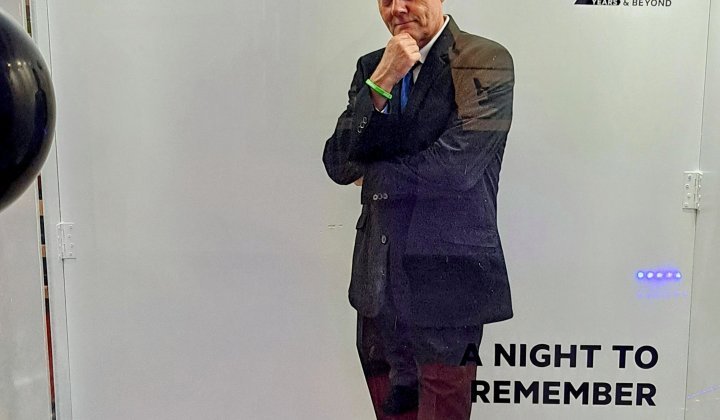Retail expert and MD of Avroy Shlain Cosmetics, Susan Mawer, facilitated the five 90-minute sessions. Panellists tapped into changing business models, informal markets and township retail, how landlords can entice customers and create experiential malls, and the evolution of the industry in 2021 and beyond. In Part One of this article, we report on some of the conference’s high-level insights. Part Two zeroes in on what is currently the sector’s most important driver – the emergence of digital. Read Part Two here.
Part One
Retail’s New Horizons
Susan Mawer kicked off by citing Leon Megginson, Professor of management and marketing at Louisiana State University, who said: “According to Darwin’s Origin of the Species, it is not the most intellectual of the species that survives. It is not the strongest that survives, but…the one that is best able to adapt and adjust to the changing environment in which it finds itself.” She then said: “I think this is true at the moment. We are going to see change and transformation like we have never seen.”
Dominant themes that emerged over the five days included the need for omnichannel strategies and customer-centric business models. Convenience emerged as a key driver of consumer habits, and symbiosis across the different industry sectors also came through strongly. Possibly, however, the key takeaway from the conference was that retailers who were not paying attention to these trends would most certainly be left behind.
Omnichannel retail strategy
It was agreed that perhaps the biggest trend impacting the sector was the need to adopt omnichannel retail strategies. By definition, an omnichannel strategy means that retailers offer consumers a fully-integrated shopping experience that includes brick-and-mortar stores, online shopping, mobile browsing and anything that falls between these options.
Mike Smollen, chief growth and innovation officer of the Smollen Group, noted: “Anybody with a really strong omnichannel strategy has done really well… Allowing themselves to be online exposed them to a larger portion of the population.”
What was really interesting about the idea of omnichannel retail is that this is not only a trend that impacts national retailers – the informal sector is also taking note of digital tools. GG Alcock, the author of KasiNomics and Kasinomic Revolution, said that although vendors still had their food stands on the street corner, they started posting their offerings on Facebook and WhatsApp, and offered delivery. “I believe in the future of digital and technology. In Africa, and particularly in South Africa, it is not going to be online virtual and web-based; it’s going to be Facebook and WhatsApp,” he said.
Richard Mukheibir, CEO of Cash Converters, added that this emerging trend was skewed towards “digitisation with that human context”. It is about using technology to remain close to customers and to staff. However, moving with the times requires agility, and businesses need to be able to think on their feet and adapt to changes almost in real-time. Using the Cash Converters story as an illustrator, Mukheibir explained that it launched its web shop in August 2020. Initially, people could only buy online, but they can now also sell online, and apply for and pay off loans, all in real-time.
Ultimately, omnichannel retail is about making shopping easier for the customer. This feeds into the next trend – convenience.
Convenience
Not only are our lives becoming increasingly busy, but Covid-19 has made consumers a lot more cautious and aware of their personal safety. The informal sector is offering this kind of convenience – quick and easy shopping, explained Alcock. Whether people need a takeaway lunch, fruit, or to top up on basics, vendors, spaza shops and the taxi-rank (or rain) economy offer people a quick and easy shopping experience.
Suburban shoppers are also demanding convenient shopping options. This desire saw small suburban shopping centres and strip malls faring better than the larger malls over the past year. As was the case with the informal sector, these smaller centres also offered a safer shopping environment due to smaller traffic volumes and the fact that stores were operating ‘outside’ rather than in a closed environment, explained O’Connor.
As such, retailers operating in malls must now start working with their landlords to find innovative ways to draw people back. CEO of Vukile Property Fund, Laurence Rapp, explained that currently, the statistics indicate that people are only venturing to malls when they have something specific to buy. Although the per-head conversion rate is high, the malls are not getting the level of pre-Covid foot traffic they enjoyed.
To counteract this need for convenience, shopping will have to become more exciting for shoppers, and the experts urged retailers to view the sector holistically to try and once again boost foot traffic.
The symbiosis of retailing
For this reason, viewing the retail ecosystem as several symbiotic relationships could be a game-changer. Sipho Vuso Majija, director of Fortress REIT Property Portfolio, told delegates, “50% of our shoppers actually shop in the informal sector, as well. So, when you’re talking about a tenant mix, it goes beyond the walls we build.” He stressed that landlords must view informal traders as part of their tenant mix. Setjhaba Makhatho, director of BiBi Cash & Carry, agreed. “Wherever there is a group of informal traders, they always bring feet into our stores,” he said.
Yongama Njisane, principal economist and head of the technical committee of the Retail Inquiry at the Competition Commission, took this a step further by observing that malls should not only embrace the informal sector on the outside of their centres but that landlords should also work with these traders to drive their growth and inclusion within shopping malls. “There is certainly a need for a model that probably is more pro small business than we currently have,” said Njisane. However, he stressed that these smaller retailers would need a lot of support if they were to survive in a big retail environment.
The national retailers were then also urged to use this synergy between the formal and informal sectors and find ways to work together to drive their brands into the townships and rural areas. However, getting this right would require a thorough understanding of the needs of these traders and how they operate in what is often a very formalised sector, explained Alcock.
Ultimately, drawing people in with a compelling and appealing experience will appeal to the consumer, requiring a greater understanding of their needs and wants.
Make customers central to the strategy
Now, more than ever, customers must be central to any retail strategy. “It’s not just about understanding your customer; it’s about actively engaging them, involving them, and making sure it is a reciprocal relationship,” said Mawer.
Graham O’Connor, CEO of the Spar Group, added: “I think there’s a big opportunity to get more information, and then to use that information smartly so that we can attract our customers and keep them.” So, good data is now becoming key.
Research has shown that value, convenience and a great shopping experience are increasingly important trends within the consumer mindset. People also want to lead healthier and more conscious lives, and they want their retailers to have a greater purpose that extends into the community.
Throughout the conference, other trends were also mentioned, such as the importance of hygiene within the retail sector and the fact that cash is still the driver of the South African economy. But the take-home point of the week was clear: If retailers are going to survive, then consumers and their safety and convenience must be at the centre of all future retail planning.
People won’t stop shopping, but how they shop is currently undergoing a sea change of note. Retailers need to keep up.
Adapting retail in a Covid world
Covid-19 has had a huge impact on how retailers operate, and although the pandemic may not have been responsible for developing trends, it certainly has accelerated their uptake. Here are 10 trends retailers need to take note of in 2021:
- Health and safety must be prioritised. From hygiene to food packaging, customers need to feel that their well-being is being put first.
- Convenience is now more important than ever. People want to be able to shop easily without exposing themselves to Covid-19. As such, online ordering, deliveries, and click and collect, all need to become central to retailers’ business models.
- Omni-channel retail strategies offer customers a holistic shopping experience in this digital world.
- Enhanced shopping experiences are key for retailers to draw people in. Customers want to feel good about shopping, whether it is in-store or online. Functional is no longer an option.
- Value is now more important than ever, so retailers need to become more innovative around how they present offers and deals.
- Community well-being is becoming increasingly important to consumers as recessionary conditions bite, and the less fortunate are impacted.
- Symbiotic ecosystems give customers a greater choice as they can access national, entrepreneurial, and informal retailers.
- Cash is king. Retailers need to ensure they cater to consumers who want to use cash, especially around their online offerings.
- The informal sector is a vital retail sector, with some estimates suggesting it contributes more than 18% to South Africa’s GDP and employs 17% of its workforce.
- Data and information are key commodities but need to be mined from the right sources to be relevant and useful to retailers.
Read Part Two here.




